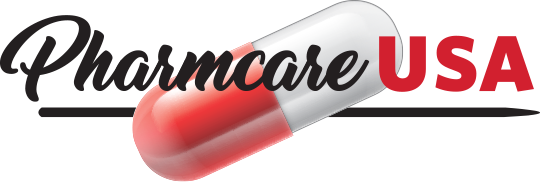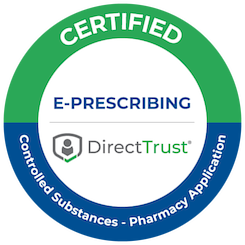New Hazardous Drug Disposal Rules that Affect Nursing Homes and Assisted Living Facilities
According to Wade Scheel, director of governmental affairs for Stericycle Environmental Solutions, University of Chicago researchers and others estimate that nursing homes waste more than $2 billion in drugs each year. This amounts to about 2,300 tons of dangerous drugs, most of which are discarded down the drain. Additionally, 4,100 tons of drug waste are sent to landfills.
In late 2015, the Environmental Protection Agency (EPA) provided the first indication of strict new hazardous waste management rules that would affect nursing homes. One of the predictions was a potential ban on disposing drugs in toilets, a practice that has been used for years and has left many environmentally conscious healthcare workers uneasy about flushing medications away.
Frank Grosso, former CEO and executive director of the American Society of Consultant Pharmacists (ASCP), was puzzled about how the government would enforce the ban, stating that the industry needed clear guidelines for drug disposal and more collaboration between government agencies.
Nursing home industry officials expressed concerns about the high costs associated with more expensive alternatives that would likely involve boxes, shipping manifests, and extensive paperwork. They also acknowledged that drug storage and handling practices could contribute to premature expiration and diversion. The assisted living industry was even more vocal in their objections, citing the low level of medication among their resident populations and a lack of infrastructure for proper disposal. Additionally, a maze of laws surrounding drug ownership in assisted living facilities could hinder efforts to address the issue.
Earlier this fall, four years after the initial announcement, it was revealed that assisted living facilities would be exempt from the new hazardous waste rules. However, the rules went into effect for skilled nursing facilities.
The long-term care industry has faced a complex and burdensome set of rules and regulations around hazardous waste disposal for many years. These rules involve various government agencies, including the FDA, DEA, and EPA, and are often voluminous, overlapping, and contradictory.
The government has responded to this issue with the implementation of new hazardous waste rules.
The EPA’s New Hazardous Waste Management Rules Affecting Nursing Homes and Assisted Living Facilities
The rule, outlined here, was published on February 22, 2019.
The EPA’s new hazardous waste management rules are designed to protect the public and the environment from the dangers of improper hazardous drug disposal. Nursing homes generate a significant amount of hazardous waste, most of which is disposed of through the municipal solid waste system. However, many nursing homes do not have adequate facilities or staff training to properly manage their hazardous waste. As a result, these facilities are often cited for violations of the EPA’s rules.
The new rules require nursing homes to have a designated staff member who is responsible for managing their hazardous waste. This staff member must be trained in proper hazardous waste management procedures and must have access to adequate resources. In addition, nursing homes must develop and implement a written plan for managing their hazardous waste. This plan must be reviewed and updated on a regular basis.
The EPA’s new rules will help to ensure that nursing homes are properly managing their hazardous waste and protecting the public and the environment from its dangers.
What’s in the EPA Rules?
The new EPA rules state that all health care facilities must dispose of their hazardous drugs in a safe and secure manner. The rules also require that all health care workers who come into contact with these drugs must be properly trained in how to handle them. Lastly, the rules stipulate that all hazardous drugs must be labeled as such.
The rules also call for pharmacist to dispense the drugs in accordance with existing regulations, and they must ensure that all records pertaining to the drugs are kept up to date. Furthermore, the rules require that any waste from hazardous drugs must be disposed of using EPA-approved methods. Finally, the rules require that pharmaceutical companies strictly adhere to safe storage and disposal practices when handling these drugs.
The EPA rules are designed to reduce the risk of environmental contamination and human health issues related to the improper disposal of hazardous drugs.
The rule is composed of three main components. Firstly, the “Sub Part P” EPA amendments pertain to the disposal of hazardous drug waste in nursing homes. This includes a national ban on discarding drugs in toilets, effective August 21, though it only applies to hazardous waste pharmaceuticals. The EPA also advises against flushing any pharmaceuticals. Secondly, the “USP 800” recommendations provide guidelines for the handling of hazardous drugs by healthcare personnel in all settings. The EPA announced on November 1, 2022, that these recommendations will become applicable on November 1, 2023. Finally, the DEA’s “21 CFR Final Rule” allows long-term care facility staff, overseen by DEA-registrant consultant pharmacists, to dispose of residents’ pharmaceutical waste, including controlled substances, on their behalf.
Other parts include several key provisions, including an exemption for over-the-counter nicotine replacement therapies like gums, lozenges, and patches, which will not be classified as acute hazardous waste. However, prescription nicotine products, e-cigarettes, and liquid nicotine devices will still be considered hazardous waste. This part of the rule does not have a specific adoption timeline as it is more lenient than existing laws, and states can choose not to adopt it.
Other important elements of the rule include limiting the storage of hazardous waste to one year, providing employee training on the management and storage of pharmaceutical waste, and categorizing healthcare facilities by the amount of hazardous drug waste they generate each month. Facilities with 20 or fewer beds are assumed to be very small quantity generators, generating less than or equal to 100 kg (220 pounds) per calendar month of hazardous waste.
The rule also establishes special regulations around the disposal of empty pharmaceutical containers, such as bottles, vials, and bags, as regular household waste. Offenders could face a maximum fine of over $70,000 per day per violation.
Furthermore, pharmaceutical waste may be considered hazardous if it exhibits one of four characteristics: ignitability, corrosivity, reactivity, or toxicity. The rule also includes provisions that certain hazardous waste is non-creditable after being technically dispensed, as well as special regulations regarding DEA controlled substances, which are exempt from the regulation as long as they are not “sewered” and are managed and destroyed in accordance with DEA rules.
How does this Affect Nursing Homes and Assisted Living Facilities?
The new hazardous drug disposal rules will have a major impact on nursing homes and assisted living facilities. These facilities will now be required to have a designated area for the storage of hazardous drugs, as well as proper ventilation and lighting. In addition, they will need to have a plan in place for the safe disposal of these drugs.
Many nursing homes and assisted living facilities are already struggling to comply with the existing regulations governing the storage and disposal of hazardous drugs. The new rules will only add to the burden these facilities face. It is important that these facilities take the necessary steps to ensure that they are in compliance with the new rules. Failure to do so could result in serious penalties, including fines and potential closure.
Nursing homes and assisted living facilities should also take steps to educate their staff about the new hazardous drug disposal rules, as well as any other applicable regulations. This will help ensure that these facilities are able to comply with the law and provide a safe environment for their residents.
Operational Challenges Presented by these Regulations
The new regulations require that all hazardous drugs be disposed of through a reverse distribution system. This system requires that the drugs be shipped back to the manufacturer or a third-party disposal company. The cost of shipping and disposing of the drugs can be significant, and nursing homes may need to budget for these expenses.
In addition, the new regulations require that all hazardous drugs be labelled with a special symbol. This symbol must be prominently displayed on the drug label and on any packaging materials. The purpose of this symbol is to alert healthcare workers to the potential hazards associated with the drug.
Some operational challenges that may be presented by these regulations include:
– Ensuring that all hazardous drugs are properly labelled with the required symbol.
– Shipping all hazardous drugs back to the manufacturer or a third-party disposal company in a timely manner.
– Budgeting for the costs associated with shipping and disposing of hazardous drugs.
What to do About these Regulations?
The new regulations for hazardous drug disposal could have a significant impact on nursing homes. Here are some things to consider:
1. Review the list of hazardous drugs that are now regulated.
2. Determine if any of these drugs are used at your facility.
3. If so, develop a plan for disposing of them properly. This may include working with a hazardous waste disposal company.
4. Train staff on the new procedures and make sure they understand the importance of following them strictly.
5. Keep records of all hazardous drug disposals to ensure compliance with the regulations.
By taking these steps, you can ensure that your nursing home is in compliance with the new regulations and protect your patients and staff from exposure to dangerous drugs.
Pharmcare USA’s Consultant Pharmacists Can Help
If your nursing home is like most, you are always looking for ways to improve the quality of care while also reducing costs. One way to do both is to hire a consultant pharmacist.
A consultant pharmacist can provide many services that will help your nursing home meet the new hazardous drug disposal rules. They can help you develop policies and procedures for the safe storage, handling, and disposal of hazardous drugs. They can also train your staff on these policies and procedures.
In addition, a consultant pharmacist can review your current medication use and make recommendations to improve clinical outcomes and reduce costs. They can also work with your staff to ensure that medications are being used safely and effectively.
The benefits of hiring a consultant pharmacist are clear. If you are looking for ways to improve the quality of care at your nursing home while also reducing costs, hiring a consultant pharmacist is a great option.




